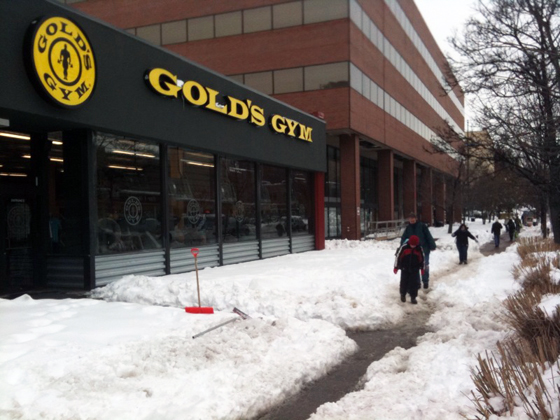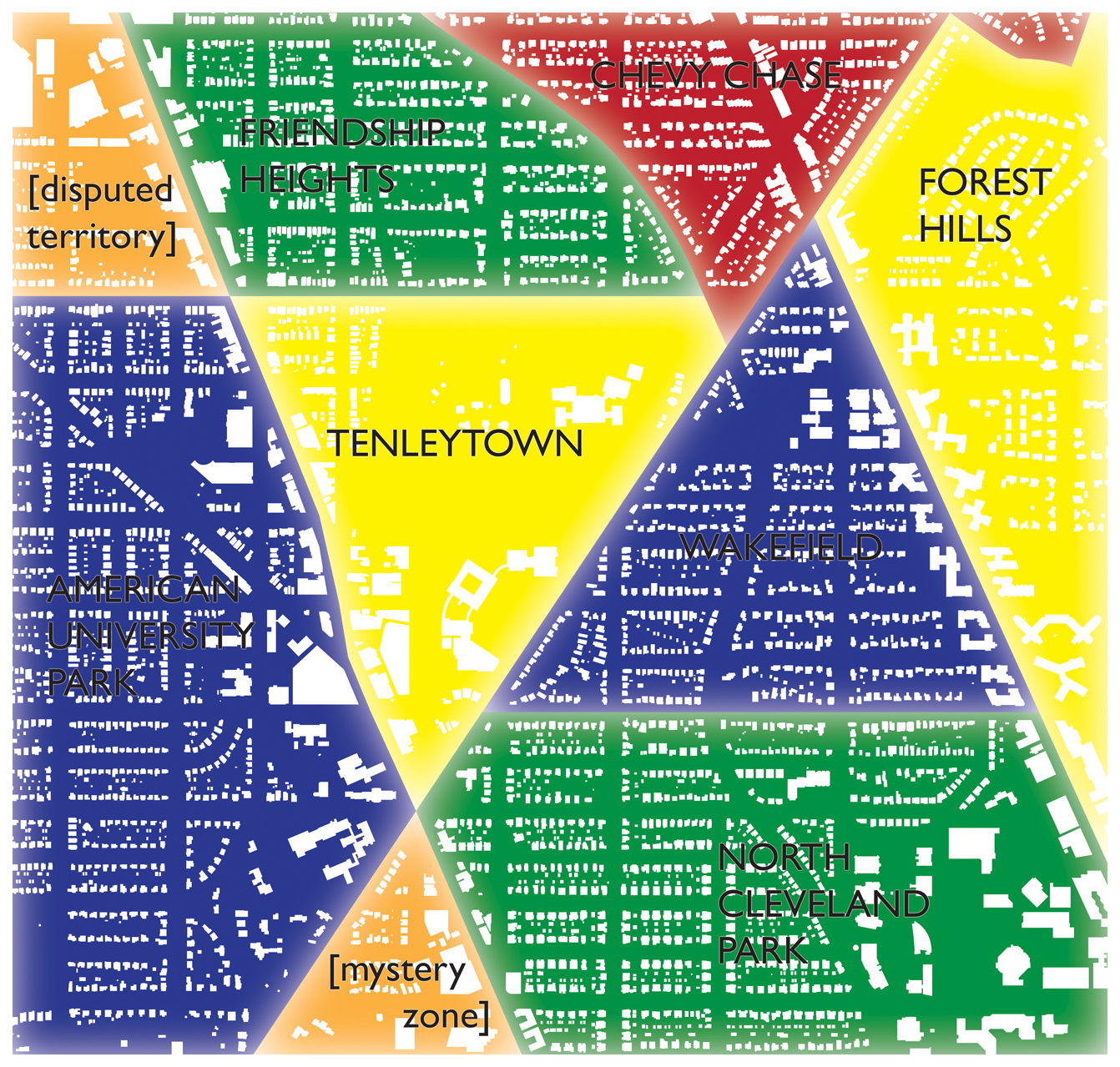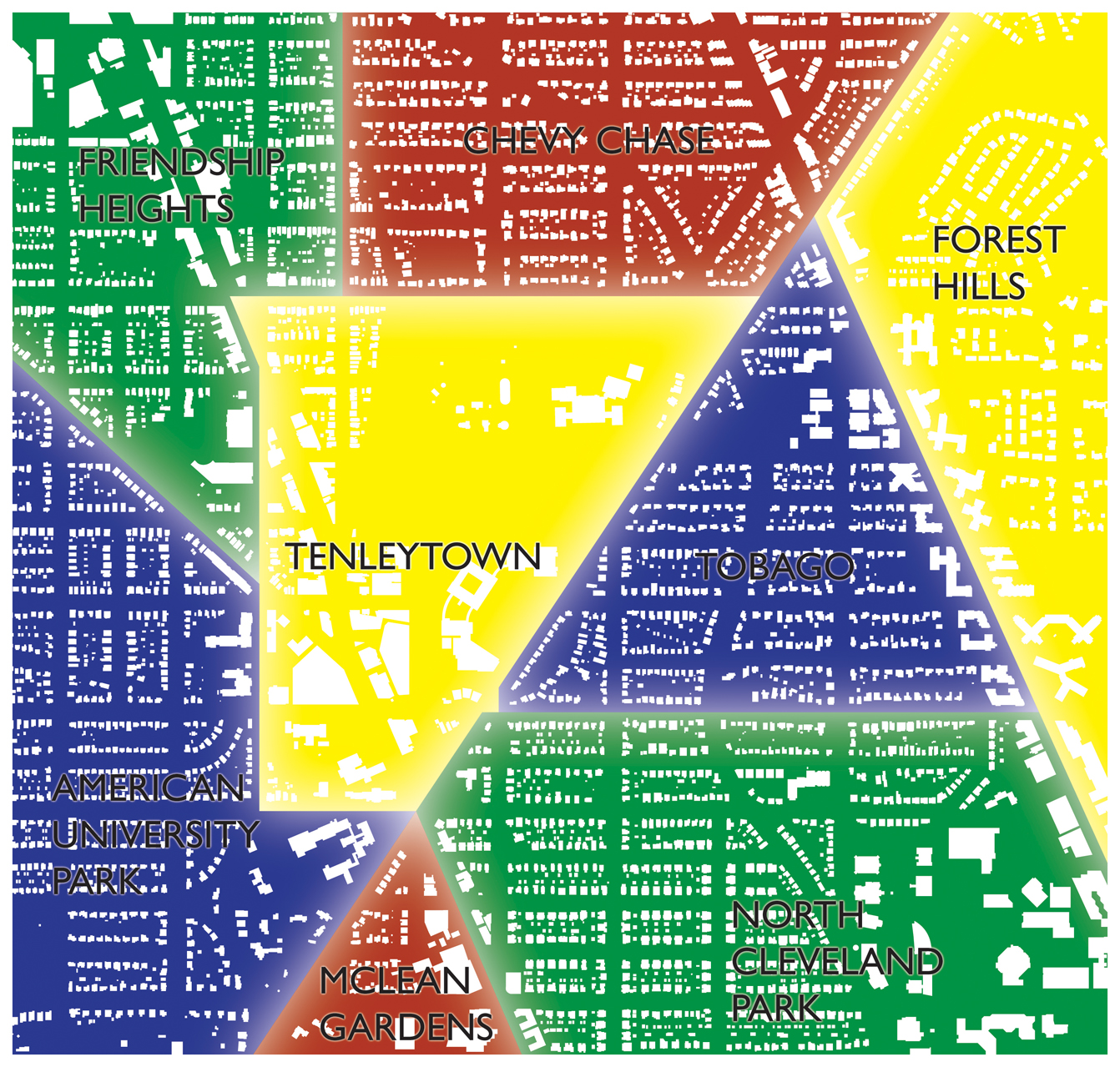Loyal readers of цarьchitect probably know that I hate the official name of the neighborhood I grew up in, North Cleveland Park “Wakefield.” Hopefully, that name will finally die. But my grouchiness about this coincided with an interest in the way that architects determine, delineate, and represent the concept of place. The goal of renaming an insignificant neighborhood in DC did dovetail nicely with my less modest plans to overturn planning and real estate practice.
So, the stupid name I did not know until I was 23 forms the starting off point for this discussion. That name lacks the lacecurtain cachet of “North Cleveland Park” or the actual uniqueness of “Tenleytown.” It’s a white-bread name reminiscent of too many other suburban developments. And, in fact, most of the area West of Connecticut Ave, North of Albemarle St., and East of Nebraska Ave was developed shortly before World War II and is one of the last areas to be developed as a tract in DC.
Because this name and others in the area came with the developments, neighborhood names tend to be bounded by major roads. Yet the centers of community and busy commercial areas. So, residents have ended up with indistinct locations bearing forgotten names and very popular ones with no names but provisional monikers, like “Comet Corner” and “Van Ness.” Or, according to City Paper, the area consists of Upper Caucasia, Connecticut, and Subarubia.
People have been attempting to name the area between Chevy Chase and Cleveland Park for over a century. Tenleytown may have grown up around John Tennally’s Tavern, but family names like Nourse and Dryer have disappeared from maps. In the late 1900s, the first developers came along and tried to add Armsleigh Park, Colorado Heights, Mount Airy, and Gizor. What seems to make a difference in whether the names stuck or not is whether the neighborhood has a clear social and commercial center. Tenleytown and Georgetown have such places. Forest Hills and AU Park do not.
Continues
Continue reading ➞ Reno Park Recap: Giving Northwest a Bad Name


